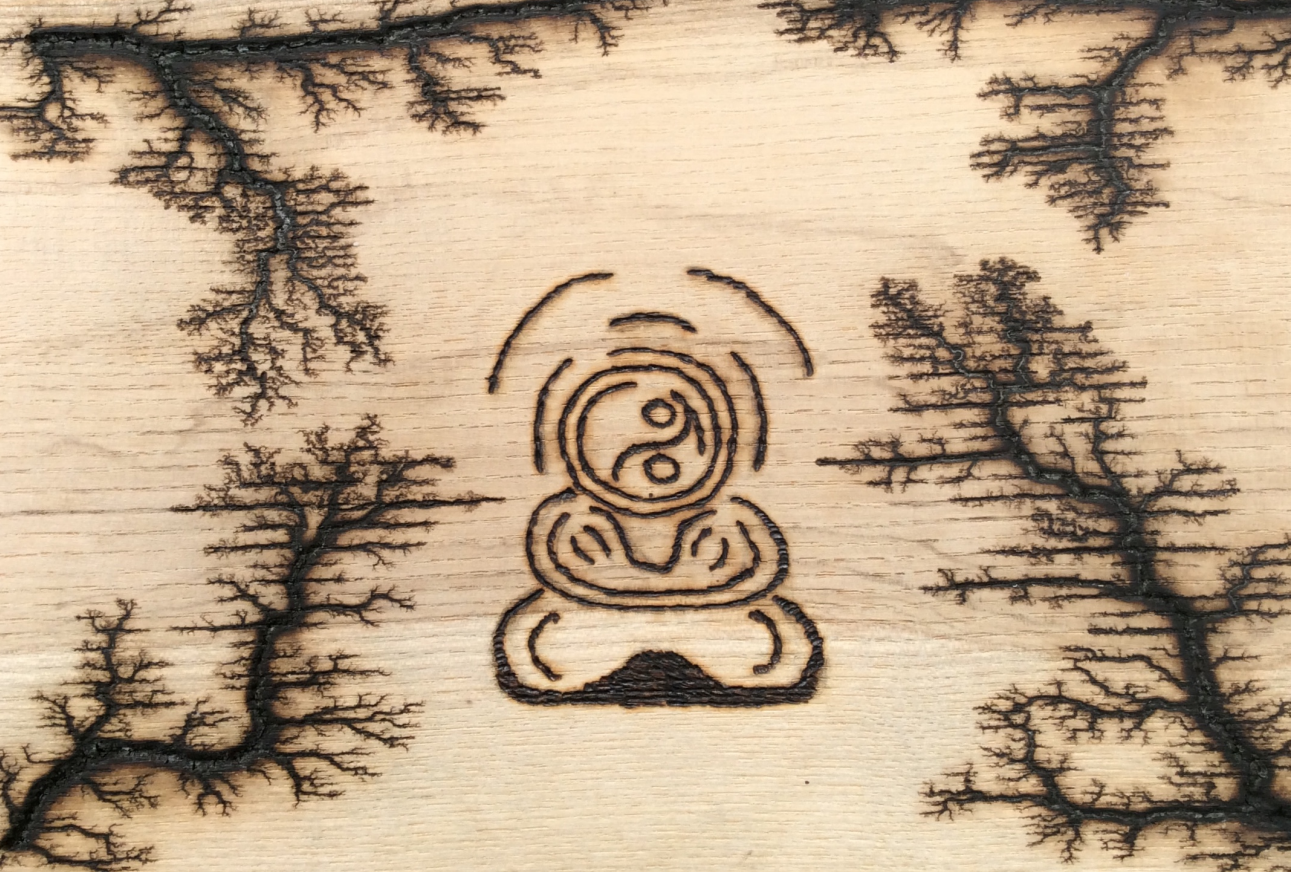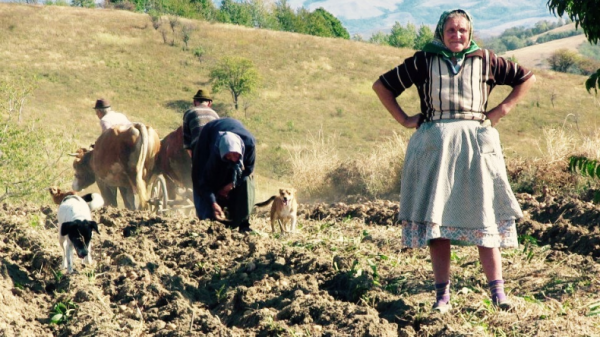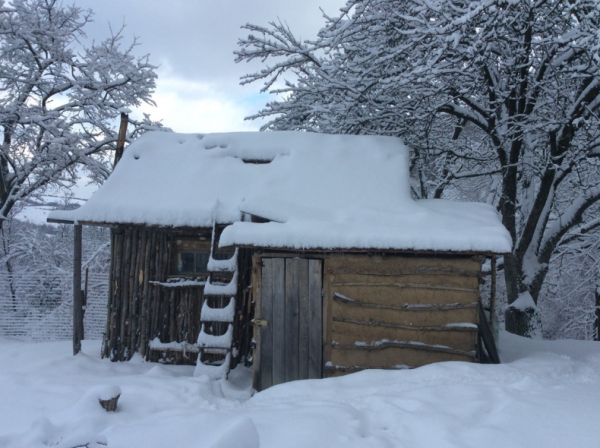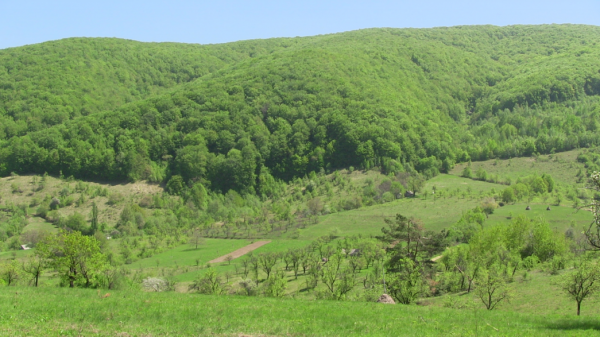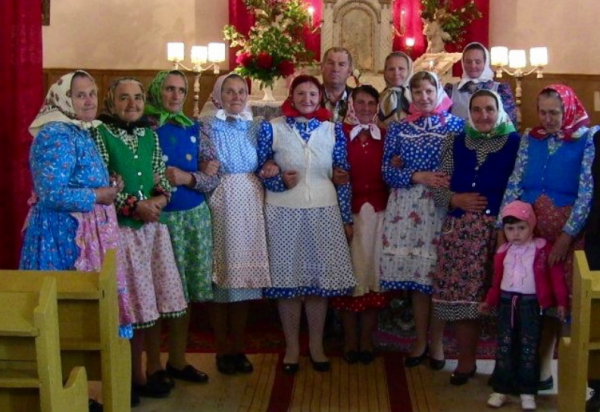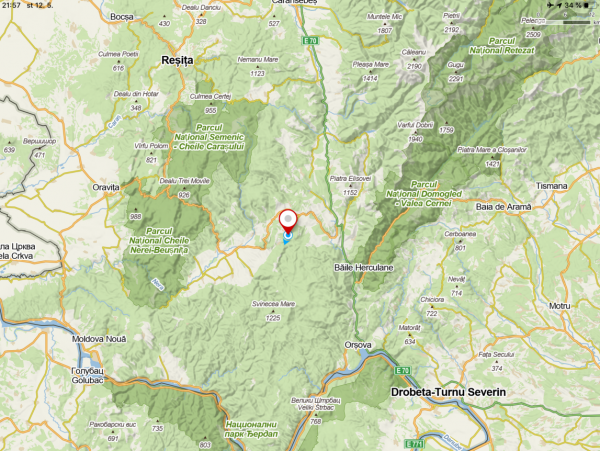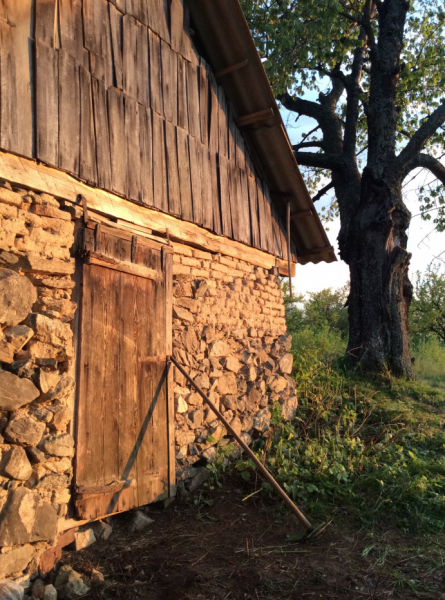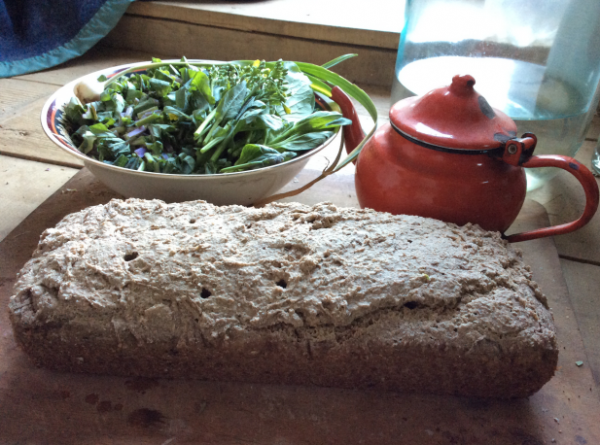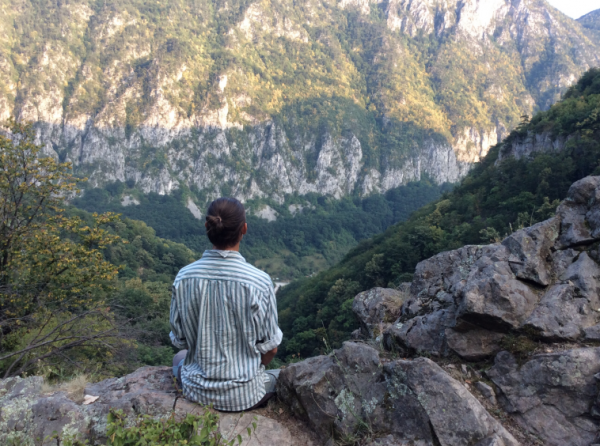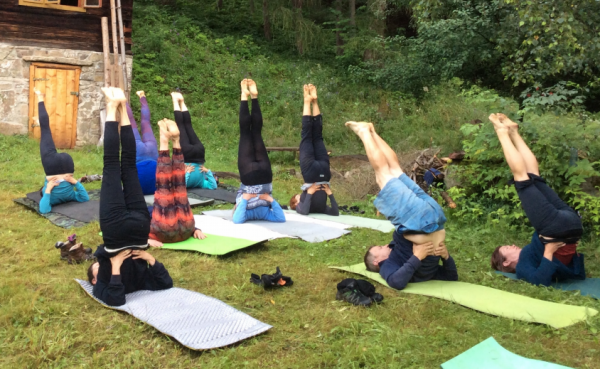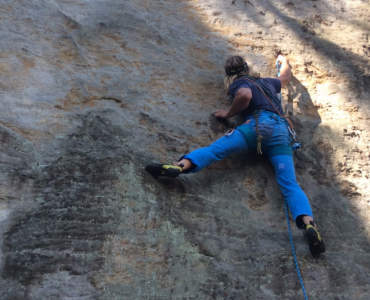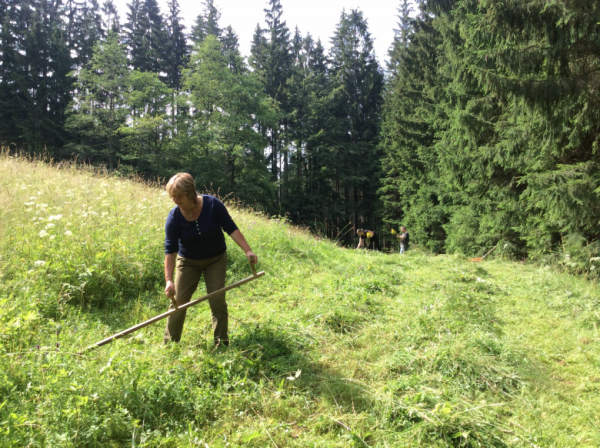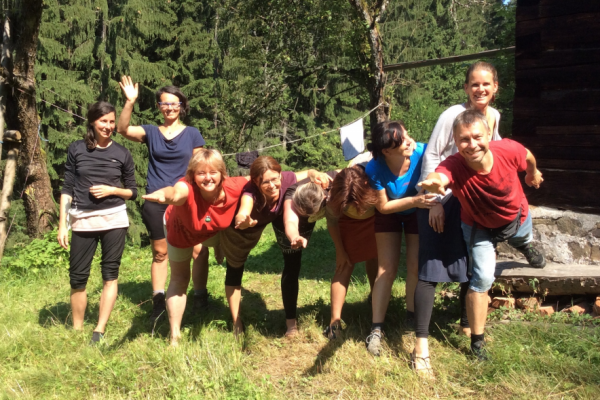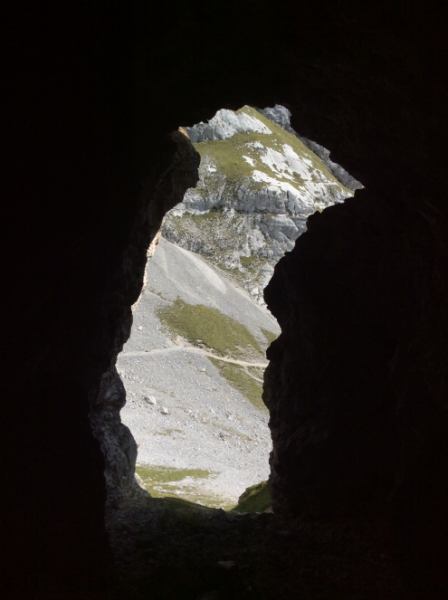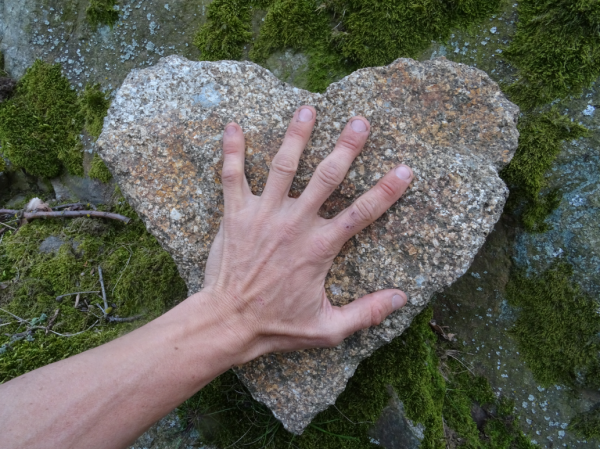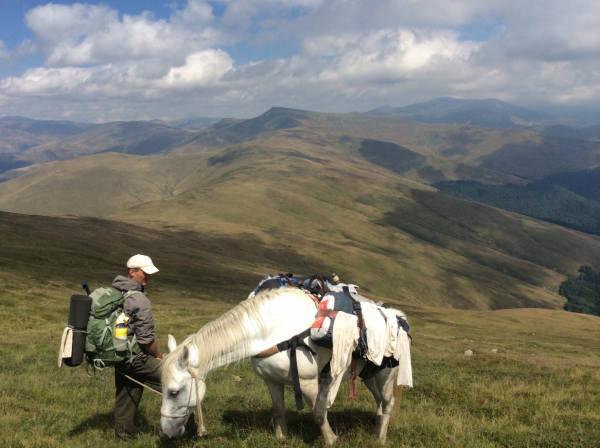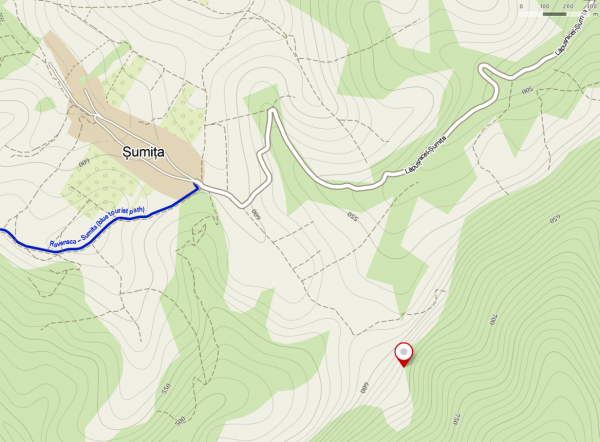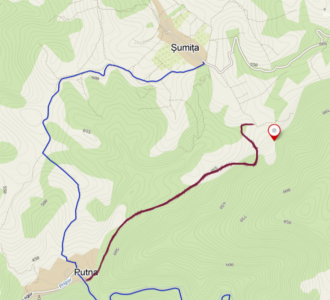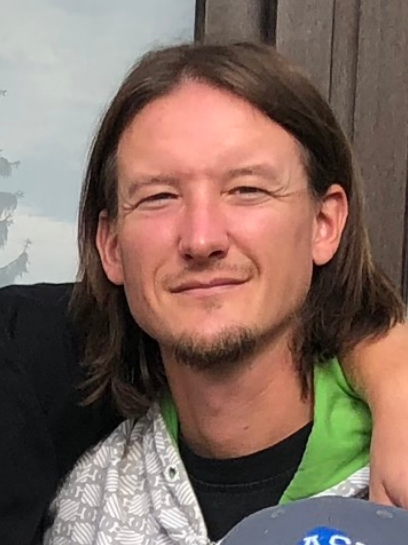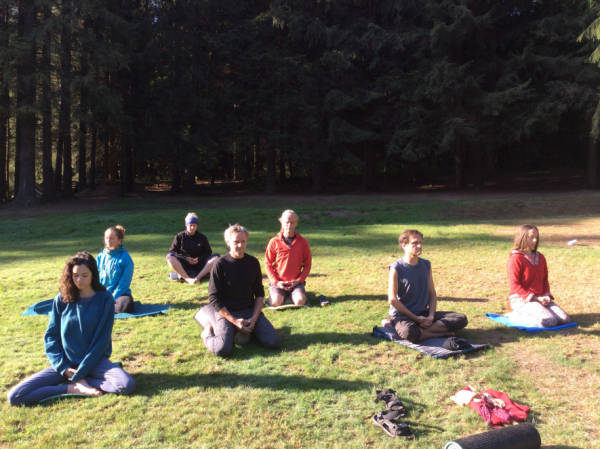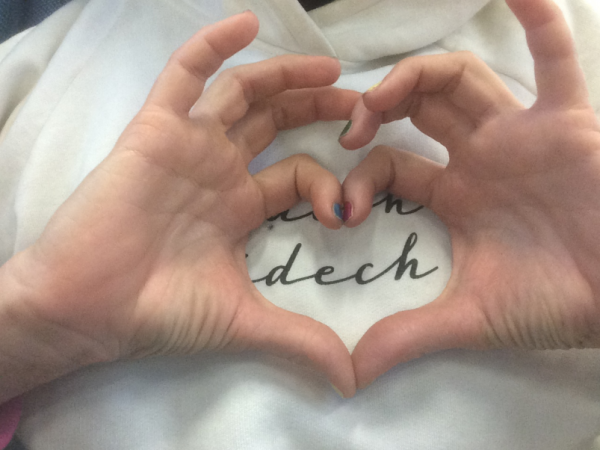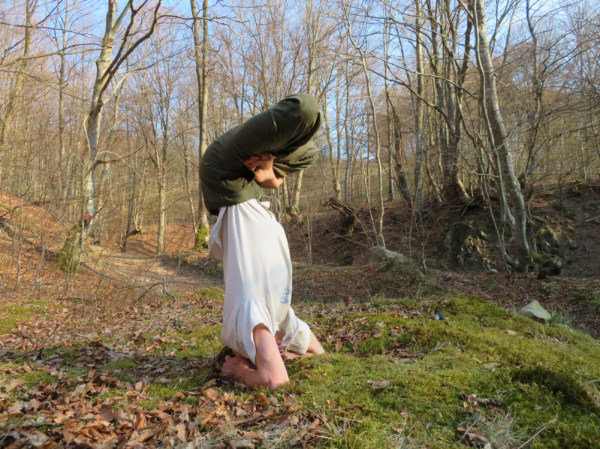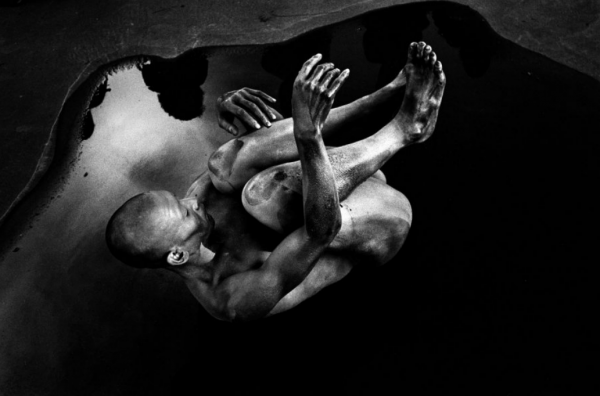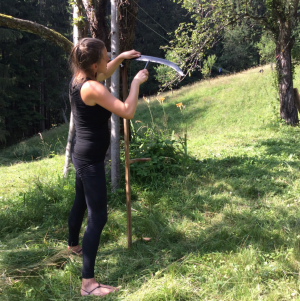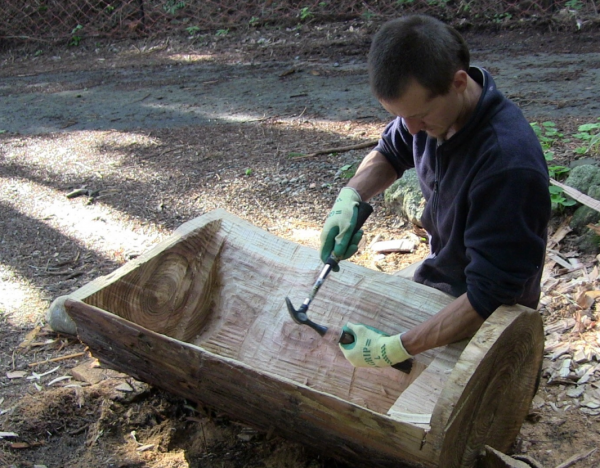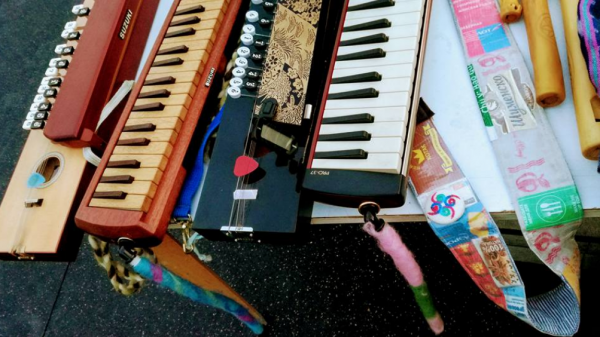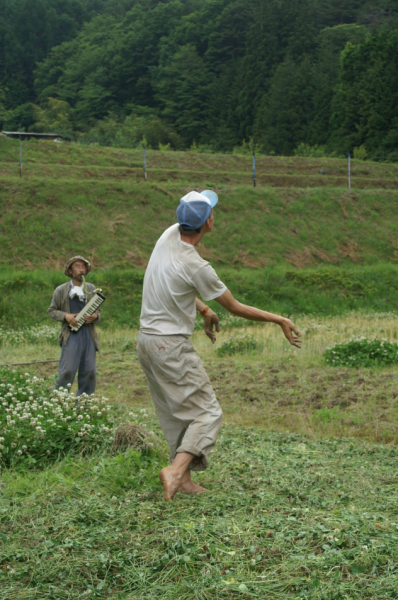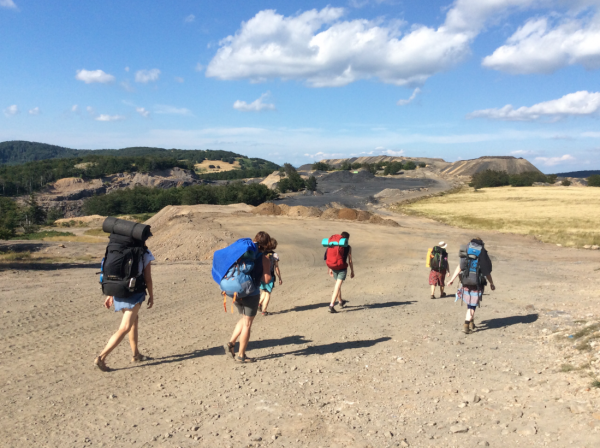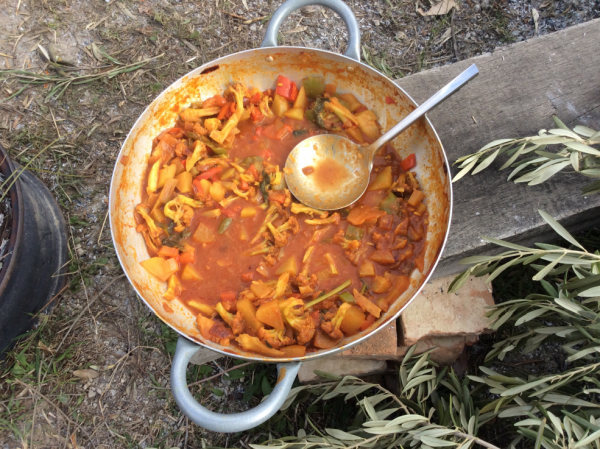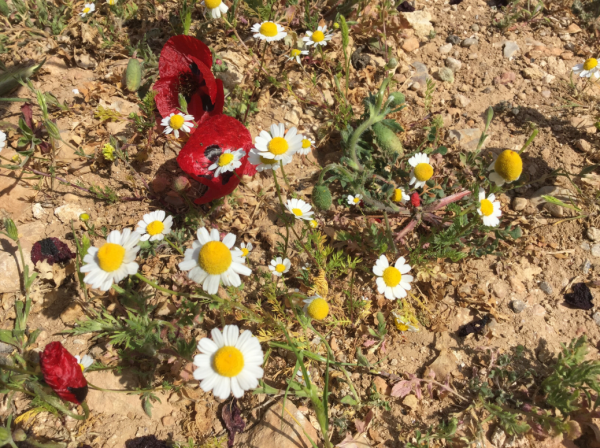Kolíba Ashram
History and purpose
The place was established in 2012 by Ondřej and his Japanese ex-partner Fukiko in a remote mountain areain Romania as a basement for their anthropological studies of the traditional local Czech farming community. Soon Kolíba developed into an organic family farm focusing on self-sufficiency and aiming the independency and “off the grid” way of living.
Achieving this in 2015, the self-sufficient goals have been gradually put aside and since 2016 the farm was transforming into Ondřej’s personal hermitage focusing more on spiritual practice, art and basic gardening. From 2014 to 2019 the farm/hermitage was hosting various volunteers and students as well as being a basement for one-week-long silent zen-yoga retreats (which includes trekking and farming training).
Recently the place has gain a communal character as “Kolíba Ashram”. It is open to all who wish to grow and rise their consciousness through regular zen and yoga practice, as well as through art, farming and outdoor sport activities. And, of course, who are ready and willing to train and cultivate their personality through communal way of living.
Ashram is open from middle May to middle September.
Longer stays (at least one or two weeks) are preferred over short visits
What is the place like
Ashram lies on the slopes of Almaj mountains in southern Romanian Banat, not far from borders with Serbia and Bulgaria and close to Donau river. It is situated deep in the nature, with altitude of 630 m, surrounded by old beech forests and rural landscape that has been taken care of by local Czech people in a traditional way last 200 years.
The nearby village Sumita was established in 19. century by Czech immigrants (together with another 5 villages in the area). Due to its natural isolation and cultural difference it kept its traditional character till these days. People speak an archaic Czech language, wear traditional clothes and the roots of their thinking (as well as the ways and habits concerning their lifestyle and religion) can be trace back to rural Czechia of 19. century. In surrounding Romanian villages also still survives the spirit of farm and pastoral lifestyle, rural traditions and religious values.
Ashram is a quiet and clean space. The land that surrounds the ashram does not know the use of agricultural chemicals. To hear from there the sound of an engine or to see an airplane on the sky (or traces of an artificial light from towns) is rather rare. The ashram land is a borrowed property provided by a local family so it is free from the bonds of ownership.
The closest neighbor (Romanian farmer), the closest village with basic shop (Sumita) and the closest concealed road are almost 2 km far. The closest doctor (in Lapusnicel) is 7 km. The closest train station (in Iablanita) is about 20 km and the closest supermarket and hospital (in Bozovici or Baile Herculane) is about 35 km far. The closest (and in Romania the most extensive) rock-climbing spot (Baile Herculane), hot springs (at the same place) and the beginning of hiking trails to high mountains (Munti Cernei and Godeanu) are also about 35 km in distance. 30 km far are the borders of Domogled National Park and 45 km the borders of national parks Semenic and Cheile Nerei.
Material basement (accommodation, food, water, electricity)
The ashram itself is a modest natural place with two small buildings and basic living and farming equipment. It was made out of a shepherd cottage, built from cob and wood in 1933.
Visitors stays in caravan (2-4 people) and tents (6-12 people) which are provided. It is also possible to bring one’s own tent or a van (there are many possibilities to park the car on the meadows surrounding the ashram).
Drinking water comes from a mountain spring 200m far from the main house where is also installed a basic cold shower system. At the same place washing clothes by hand is done. For washing body, clothes and dishes ONLY BIO-DEGRADABLE and NATURAL SOAPS and SHAMPOOS are used (please, don’t use anything else). For watering the garden and for personal refreshment one can find 5m wide second-hand swimming pool. Available is also wood-stove-heated sauna.
Basic solar system provides the possibility to charge a phone or tablet through USB. The place itself is (surprisingly) reached by very good 4G signal.
Schedule and activities
Ashram has a set schedule but visitors are free to join any of the activities according to their own will. However, in order to keep the community spirit it is recommended to participate the schedule fully.
It is also important to note that ashram is not a leisure center and doesn’t serve as a spiritual vacation hotel.
The farming and maintaining works usually consist of permaculture gardening, gathering herbs and making herb oils, natural building and restoration projects, gathering and preparing firewood or clearing the surrounding land from bushes and thorns in order to preserve its traditional and rich rural character. All works are done by hand with absence of heavy machines.
Evenings are often spent outside by a fire place. Saturdays, especially late afternoon, evening and night, are reserved to art performances and presentations, games and party.
Sunday is completely off. No work, no practice. The food is prepared the day before.
Ashram is open for 4 month of a year from middle May to middle September.
An important image of how zen and yoga are related and deeply connected with gardening and other outdoor activities you can get from Ondrej's gardening zen-yoga workshop in Sicily in 2020 - click to watch the video (English with Italian and French subtitles)
Finance
- Accommodation and basic facilities are provided for free
- For food there is a contribution of 14€/day
- Ashram functioning is based on donations (either from visitors themselves or from outside supporters) and on Ondřej´s personal income
- Any kind of donation is welcome (money, food, tools, useful materials, extra work,...)
- Regular and basic meditation/yoga practice are for free
- In case of conducted meditation/yoga lessons (which requires extra energy of a teacher) 10€ donation is recommended. This conducted meditation and yoga is usually happening two times a week
Rules and requests
No drugs
No drugs are allowed to use or to bring to the ashram (including marihuana and mushrooms). The aim is too keep this place clear, safe and legal.
No alcohol
Visitors are asked not to consume any alcohol in the ashram (including beer).
Respect
When visiting neighboring villages, please, respect the traditional character of the place including the religion and specific mindset of the local people (the rural Czechs are usually Catholic and Romanians Orthodox Christians). Also, please, respect the nature environment and all forms of life around.
In ashram, please, respect each other as equal human beings. The ashram is not a place of dogmatism and preconceptions. All religions, races and nations are welcome.
And eventually, respect the space of the ashram itself and how things are done here.
Self-responsibility
Visitors are responsible for their own health and security. The ashram takes no official responsibility for health issues or material loss of the visitors (However, the place is generally very safe and, of course, in case of any loss or accident the basic help and care will be provided).
The nearest train station is in Iablanita. From Iablanita you can walk or hitch about 20km to Sumita through neighboring village Lapusnicel (hitchhiking is common way of transport in Romania even for locals). When walking it is recommended to follow the main concealed road rather than small paths marked in some maps (leading from Iablanita, Petnic, Globu Craiovei or Lapusnicel). These paths are often overgrown by bushes and thorns and are difficult to follow (however, an adventurer will always find the way;)
Closest bus station is in Bozovici. From there you can walk or hitch to the village Putna. From Putna walk through meadows following blue marks 5,5 km north and north-east to Sumita (see the blue line on the sketch). Or go through forest following unmarked path by a stream, directly from Putna to Kolíba Ashram, north-east about 4 km (see the red line on the sketch).
You can also go by car from Iablanita or Bozovici and get to Sumita by a good concealed road.
From Sumita (or from the last turn just before the village) walk or drive on a dirt road south-east. Go straight, no turns. The ashram is 1,5 km far.
When coming by car, leave your vehicle on the top of a hill by a white cross and walk to the ashram first (ashram is visible on the opposite slope). There we will discuss where you will park your car (because for some cars it is difficult to drive back up the hill, especially in rainy weather).
Ondřej (Ondra)
Ondřej is a zen and yoga practitioner, artist, lecturer and gardener as well as certificated therapist, trekking guide, laughter yoga instructor and climbing instructor, originally from Czech Republic. He lived in various monasteries, ashrams and communities around the world and studied with Buddhist, Hindu, Muslim, Christian and Maori spiritual authorities from who he received various names. The strongest influence, however, has come to him from a Japanese dancer and spiritual master Min Tanaka who he studied with at his organic farm and outdoor studio in Japanese Alps (and who he has written a book about).
The pillar of Ondřej’s life is regular zen and yoga practice which he started in 2006 and from which all his other activities flow out.
Contact
Email: landa.ondrej@gmail.com
Phone: 00420792588348
Via FB: Ondřej Landa (a hand as a profile picture)
Blog (with photos) on Facebook
Life in ashram 1 - Spring start
Life in ashram 2 - First climbing
Life in ashram 5 - video - Quiet life
Life in ashram 6 - Zazen, yoga, work
Life in ashram 7 - Food, garden and walks
Life in ashram 9 - taichi group
Life in ashram 12 - Last group
MORE SPECIFIC INFO
Zazen
- Zazen is a way home. It is a process (as well as a state) of calming down and emptying one’s mind. It is discovering one’s own true identity
- Zazen is the main pillar of ashram’s life. It is practiced 3 times a day, 6 days a week, in 30, 40 and 50 minutes long sessions. Occasionally Zazen is replaced by Kinhin (walking meditation) or Ohm singing
- When good conditions gather, a day long zen retreat is held
There are 3 main approaches to Zazen in Kolíba Ashram:
1. Just sitting
Zazen is a Japanese word consisted of 2 parts. Za means to sit or sitting. Zen means meditation (in the sense of Sanskrit word dhyāna). So Zazen basically means sitting meditation. But the meaning can be also understood as meditation through (or by) sitting.
The sitting itself, still and with straight spine, is sufficient . This kind of sitting is the basic conscious activity of a human being. It is not possible to sit like this without the presence of consciousness. It is not possible to sit like this and sleep. One needs to be awake and aware. And awareness is the pillar of zen life.
To find oneself, one’s own life, to find the true home, it is sufficient to uncover the awareness potential of sitting. To sit fully. Sit consciously. To really be the sitting person.
Just sitting. Nothing more. Nothing less.
Sit with whole body and whole mind. Be the sitting itself.
Sit silently. Sit in silence.
Start from your buttocks, from sitting bones, sacrum and pelvis and gradually sit consciously and wholly with all parts of your body and mind. For better concentration, with each exhale you can say inside: “(I am) sitting”.
2. Breathing
Bring your attention to the tip of your nose and observe how the air is passing through your nostrils. Do not control or manipulate your breath, just observe it. Concentrate on the sensation of the air touching your nose and lungs. For better concentration you can count the breath. Say inside “one”, when inhaling, and “one”, when exhaling. Then say “two”, then “three”... all the way up to ten. Then start again from one. Whenever you loose concentration and loose the counting, start again from one. Instead of counting you can also say inside: “I know I am inhaling”, when inhaling, and: “I know I am exhaling”, when exhaling. Or you can say only: “(I am) inhaling”, and: “(I am) exhaling”. Use English or your native language as you feel. Be with your breath fully. Here and now. Do not control it. Just observe. Be awake and aware and enjoy every second and every minute of your breath. Enjoy it as it was your dearest friend who is soon leaving for a long trip. Stay with him, fully attentive, fully open. Breath is life.
3. Mental gates - conducted Zazen
Sometimes, in first 5-10 minutes of Zazen, Ondřej offers a certain image, idea or question to work with through Zazen. If these images, ideas and questions are embodied properly, they act as a gate to deeper levels of consciousness where one can easily get in touch with one’s true Self. Use these themes with attention and awareness, digest them by your mind and body and let them guide you to a deeper reality.
(It is fair to say that calling this approach "Zazen" is not completelly correct. It is perhaps more characteristic for Indian yoga and Western type of meditation rather than for Japanese Zen. On the other hand Zen knows one more approach: the paradoxical questions and mental tasks known as koans. These classical koans are not used in ashram therefor they are not mentioned here)
Hatha-yoga and dance
- Hatha-yoga, as practiced in the ashram, is not a mere physical exercise. It traces its roots to the original and deeper purpose of work with body and breath as practiced in Indian yoga tradition. Contrary to modern approach to yoga, in the ashram sessions the body is not used as an instrument to achieve certain asana (yoga position). In opposite the asāna is used as an aid to achieve the state of connection of body and mind. More important is the process rather than the final form.
- Getting strong, flexible and healthy is also very important element of yoga but it is rather its side effect. The main aim is to unite the mind and to identify the self with one’s own body and get in touch with the root of human’s earth identity. Yoga grounds the mind, generates deep and positive feelings and removes physical and mental blockades. Like this it helps to create fruitful and solid basement for meditation practice as well as for the life itself
- The hatha-yoga session often contains an extensive pranayama (breathing) and relaxation exercise
- Sometimes is the yoga session replaced or supplemented by dance (or fitness) based exercise that allows to connect with the body in more dynamic, spontaneous and powerful way
- Yoga is mostly happening outside at “Oak yoga-deck” with beautiful mountain view
- Occasionally an additional evening yoga session is organized
Farming and physical work
- Farming and related physical work is great way to keep in touch with one’s own body and senses and to grow the connection with nature. Therefore it is important part of the life in ashram and valuable support of zen and yoga practice. And, of course, it carries important and necessary practical benefit in maintenance the ashram and in contribution to basic needs of the community (food, water, shelter, warmth, waste policy, transport etc.).
- Despite the self-sufficiency is not the aim of ashram lifestyle anymore, the mere character of the place still requires self-sufficient attitude in many ways. The spirit of independence and practical ecology is always present here and it feeds the effort of choosing creative solutions, physical work and local and natural materials over the consume way of thinking and the goods and services offered by modern economic and industrial system
- The works are done by hand without the use of heavy machines (in rare occasions, in case of exceptionally heavy or opening work, a chainsaw, a brush-cutter or a tractor is borrowed)
- As much as possible chemicals are replaced by natural substances
- Constructions are made mainly from natural and locally available materials or from waste and second-hand products
- Innovative ideas are always welcome
Art
- Art work and research is an important part of ashram daily activities supporting and supplementing the spiritual practice. But of course, as most of other activities in ashram, it is voluntary
- The purpose of the art practiced in the ashram is to search and nourish the source of creativity within each individual as well as to inspire, amuse and uplift each other. Art feeds the space and community with soft and sophisticated energies and helps to create rich and satisfying atmosphere for all
- Each person can do any kind of art according to one’s own nature and preferences. It can be music, dance, theatre and performance, mosaic, painting, literature, carving, sculpturing, circus etc.
- Feel free in collaborating with others and using the specifics of the ashram environment for your art
- Share your creation. It is welcome and recommended that everybody presents some of his/her art work during his/her stay. For this especially Saturdays are designated (but also other days)
- Sharing is an important part of art in ashram. Without sharing the work becomes more a therapy or a personal practice rather than the art itself. Through sharing an artist enriches others in the community, connects with them on another level and grows his/her own personality by integrating and uniting the creative spirit with his/her social identity
- Considering the fact that presenting one’s own art work is often self-demanding, personal and intimate, visitors are asked to respect and appreciate each act or an attempt of others for such presentation
- In ashram there are available some basic music instruments and a practice room but it is better to bring one’s own. Also one can find minimal painting equipment, carving knifes and chisels, clay and plenty of natural and second-hand materials. Dance and theatre rehearsals (as well as performances) are happening at Oak yoga-deck or on surrounding meadows and forests
Outdoor sports
- Similar to farming (and outdoor physical work in general) the outdoor sports help to keep in touch with one’s own body and to grow the connection with nature. They do it in more intense (condensed and powerful) way
- Outdoor sports strengthen the body and mind. But also allow to satisfy the desires of ego for contest and reaching goals. Like this outdoor sports serve as cleaning and supporting practice for zen and yoga
- At least once per two weeks, for those who are interested, there is organized a collective outdoor event: Trekking or hiking trip, slack-lining competition, cross-country running race, or rock-climbing in Baile Herculane and other spots
- If visitors want to participate hiking and climbing activities, they should bring their own equipment. For climbing: harness, rope, sling, helmet, (chalk), reverso (or grigri), crabs and quick-draws. For trekking and hiking: sleeping bag, sleeping-pad and backpack
- Once a time Ondřej is offering a trekking and climbing workshop and zen/yoga retreats where the participants learn how to usefully incorporate Zazen and Kinhin (sitting and walking meditation) and hatha-yoga and pranayama exercises into their sport activity. And also how to make trekking and climbing a lively and enriching component of their spiritual path and practice. During climbing workshops one can also dive into the essence of barefoot climbing (more on www.ondrejlanda.cz/outdoor)
Food and cooking
- Cooking is important part of ashram activity and practice. Relation to food reflects the relation to body and nature. And body and nature are important elements of zen and yoga practice, same as art, farming and outdoor activities practiced in ashram. Cooking team tries to prepare the food with respect, concentration and good energy for nourishing all the community
- The size and the frequency of exchange of cooking teams depends on the amount of visitors in ashram
- Meals are vegan or vegetarian (eggs and milk products are added occasionally)
-
We collect local fruits and edible wild plants and try to grow as much vegetable in the ashram garden as possible. The rest of food is in majority purchased from local farmers and is usually in bio quality. The last part comes from other sources including supermarkets
-
The richness of meals often depends on what is found in a donation box
Saturday differs from usual schedule by absence of evening practice and by more relaxed schedule in general. This day is considered as a day for finishing works, games, art presentations and party.
Sunday is completely off. No practice, no work. It is the day of rest. Simple food is prepared a day before and taken by visitors self-service.
PHOTOS

